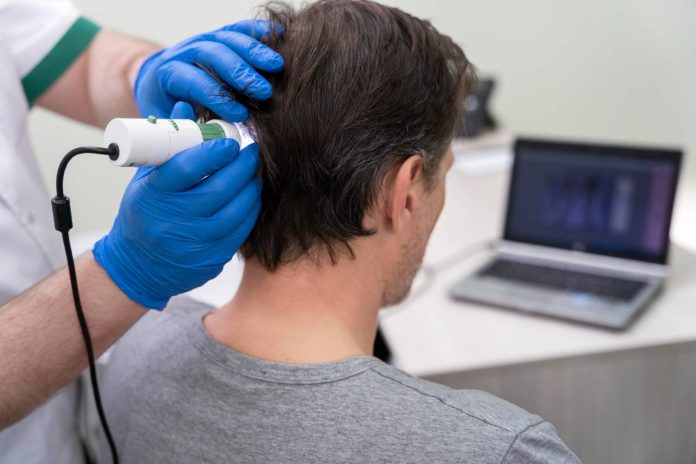If you’ve ever wanted a fuller head of hair but haven’t wanted to take the plunge, we understand. But thanks to advances in technology, the latest hair transplant techniques and hair transplantation clinics are now more accessible than ever. In this post, we’ll explore the different types of hair transplant technologies available and how they can help you achieve your desired look.
Table of Contents
New Hair Replacement Technology: Latest Developments
Hair transplant technology has seen many new developments in recent years. NeoGraft (2009), ARTAS Robotic System (2011), and Bio-enhanced Hair Restoration (2014) are just some of the latest innovations. One of the most advanced techniques is the “Simultaneous Harvesting and Implantation” (SHI) Hair Transplantation technique, which is a combination of both FUT and FUE. NeoGraft, which is a semi-automated version of FUE, has been cleared by the FDA, licensed by Health Canada, and has CE Mark with indication for use in suction-assisted follicular extraction and re-implantation. For those looking for a less invasive treatment, there is micrografting, which uses the same components found naturally in the scalp. Additionally, futuristic tools including robotics and new types of lasers are just some of the therapeutic innovations aimed at slowing hair loss and improving hair transplant results.
The Benefits of the FUE Hair Transplantation Technique
The FUE hair transplantation technique is a modern hair restoration procedure that is becoming increasingly popular for its numerous advantages. This method involves the extraction of individual hair follicles from the donor area, which are then transplanted to the recipient area. The FUE hair transplantation technique is preferred as it promises better results, less pain and discomfort, and no scarring or suture marks. It also offers better graft survival rate of up to 95% compared to the 75% survival rate of the strip method. Additionally, this method allows for adjustment of the hair transplant angle for achieving a result closest to natural level. With FUE, the entire process is painless and does not require any stitches post-transplant. Therefore, it is a safe and effective procedure for those looking to restore their hair. For more information you can visit this page and find detailed information
How PRP Robotics Boosts Transplant Hair Results
In addition to the FUE hair transplantation technique, PRP robotics has emerged as another option for individuals looking to achieve successful hair transplant results. Utilizing the same extraction methods as traditional FUE, PRP robotics pairs the procedure with a Platelet Rich Plasma (PRP) treatment. This treatment consists of extracting some blood from the patient and spinning it in a centrifuge to separate out the platelets and plasma. Studies have shown that the PRP boosts the hair cycle, allowing patients to arrive at their desired outcomes faster. Moreover, PRP encourages the adaptation of transplanted hair to the recipient area, helping the hair follicle remain intact and healthy growth hormone.
Types of Hair Transplant Robots
Robotics has been used for a long time in medical procedures, but recently, the technology has been used for hair transplant procedures as well. There are two types of hair transplant robots – the ARTAS Robotic System and the robotic FUE hair transplant system. Both use advanced digital imaging techniques to select and harvest hair follicles from donor areas. The robot arm of the ARTAS System is designed to insert the follicular unit onto a scalp more accurately, with less damage to the follicles. The robotic FUE hair transplant system uses artificial intelligence algorithms and precision robotics to harvest follicles in a more efficient, minimally-invasive manner. These systems promise improved results, with new hair growth that looks natural with no linear scarring.
How Robots Improve the Quality of Hair Transplants
Robots are becoming an increasingly popular tool for hair transplants, due to their ability to improve the accuracy and precision of the procedure. This improved accuracy can reduce the number of grafts needed, minimize damage to the donor area, and reduce the time needed for the surgery. The ARTAS hair transplant robot from Restoration Robotics is an example of a robotic system that can be used to improve the quality of hair transplants. The system uses stereoscopic imaging to map the donor area and select the best follicles to harvest. Additionally, the robotic device increases the accuracy of graft harvesting, which in turn minimizes damage to hair follicles and reduces harvesting time. The robot can also reduce fatigue and intervention time by up to 50%, making it a highly efficient tool for hair restoration.








